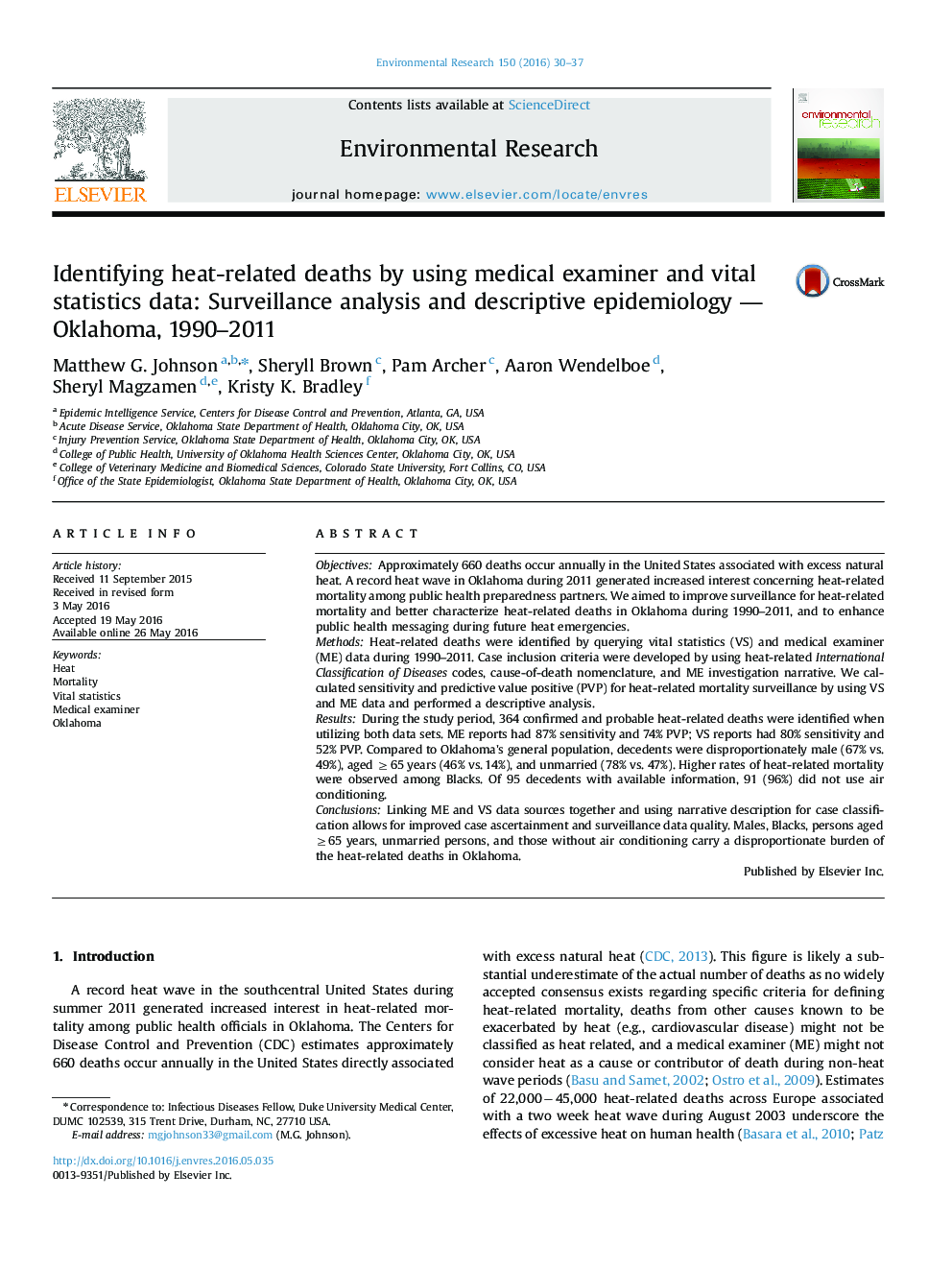| کد مقاله | کد نشریه | سال انتشار | مقاله انگلیسی | نسخه تمام متن |
|---|---|---|---|---|
| 6350942 | 1622553 | 2016 | 8 صفحه PDF | دانلود رایگان |

- More heat-related deaths have been documented in Oklahoma in recent years.
- Persons aged â¥65 years, male, black, or unmarried may be disproportionately represented.
- Surveillance can be unreliable if only searching for cases using ICD coding schemes.
- Linking medical examiner and vital statistics data may improve surveillance quality.
ObjectivesApproximately 660 deaths occur annually in the United States associated with excess natural heat. A record heat wave in Oklahoma during 2011 generated increased interest concerning heat-related mortality among public health preparedness partners. We aimed to improve surveillance for heat-related mortality and better characterize heat-related deaths in Oklahoma during 1990-2011, and to enhance public health messaging during future heat emergencies.MethodsHeat-related deaths were identified by querying vital statistics (VS) and medical examiner (ME) data during 1990-2011. Case inclusion criteria were developed by using heat-related International Classification of Diseases codes, cause-of-death nomenclature, and ME investigation narrative. We calculated sensitivity and predictive value positive (PVP) for heat-related mortality surveillance by using VS and ME data and performed a descriptive analysis.ResultsDuring the study period, 364 confirmed and probable heat-related deaths were identified when utilizing both data sets. ME reports had 87% sensitivity and 74% PVP; VS reports had 80% sensitivity and 52% PVP. Compared to Oklahoma's general population, decedents were disproportionately male (67% vs. 49%), aged â¥65 years (46% vs. 14%), and unmarried (78% vs. 47%). Higher rates of heat-related mortality were observed among Blacks. Of 95 decedents with available information, 91 (96%) did not use air conditioning.ConclusionsLinking ME and VS data sources together and using narrative description for case classification allows for improved case ascertainment and surveillance data quality. Males, Blacks, persons aged â¥65 years, unmarried persons, and those without air conditioning carry a disproportionate burden of the heat-related deaths in Oklahoma.
Journal: Environmental Research - Volume 150, October 2016, Pages 30-37